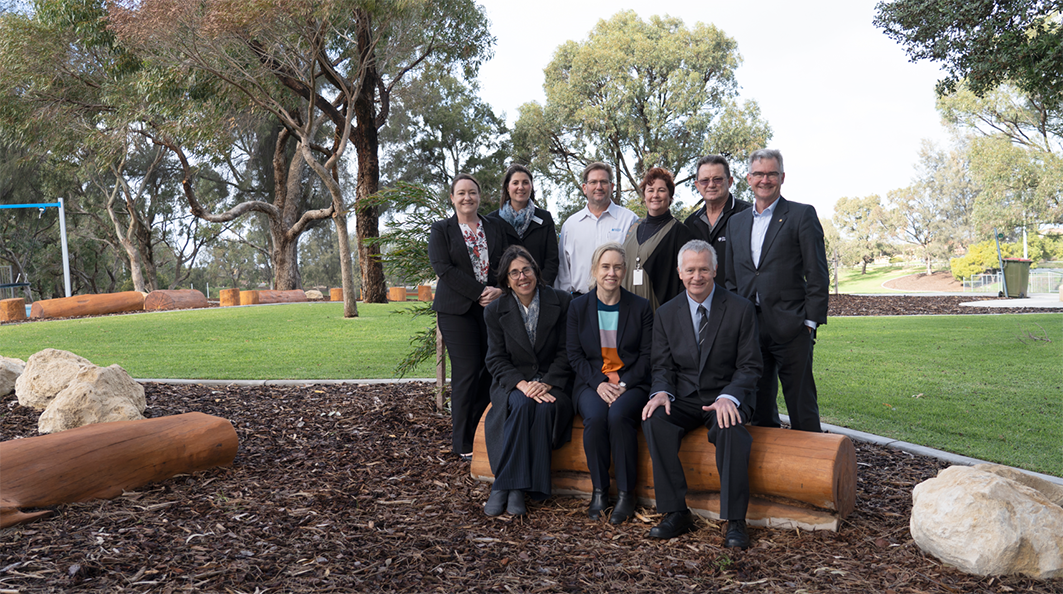This case study relates to Action 28 in the Kep Katitjin – Gabi Kaadadjan Waterwise action plan 3 delivered by the Department of Water and Environmental Regulation and Water Corporation.
Gnangara local governments with large groundwater entitlements and comparatively low tree canopy cover are most at risk of the urban heat island effect and are using the Gnangara Waterwise Councils Grants Program to assist in adapting to a drying climate.
The Gnangara Waterwise Councils Grants Program is a joint initiative of the Department of Water and Environmental Regulation and Water Corporation. The program provides funding of up to $4 million over four years (2022–23 to 2025–26) to support local government projects that improve water efficiency and urban cooling.
The grants program aims to help local governments in the cities of Bayswater, Joondalup, Perth, Wanneroo, Vincent, Swan and Stirling, and the towns of Bassendean and Cambridge, to meet the target set in the 2022 Gnangara groundwater allocation plan for a 10 per cent reduction in groundwater use by 2028.
The program assists local governments to:
- take action to reduce the urban heat island effect and keep suburbs cool and liveable
- become more waterwise
- lead by example in creating innovative, water-efficient and cool outdoor recreational spaces for community benefit
- incorporate Aboriginal cultural knowledge and engage the community.
Innovative water-saving projects
Funding will support the redevelopment of parks to include waterwise principles and create resilient open spaces to maximise water use efficiency, improve biodiversity and cool outdoor spaces. The grants are contributing to a range of projects such as:
City of Joondalup will redevelop Barridale Park (aim to reduce water usage by 21 per cent) using waterwise design principles and hydrozoning.
City of Perth will increase Stormwater Harvesting from the Claisebrook Main Drain to offset the City’s 500,000 kL groundwater allocation irrigating the CBD.
Town of Bassendean will apply ecozoning to reduce areas of irrigated turf at Success Hill Reserve and Mary Crescent Reserve, with installation of mulch and tree planting.
City of Wanneroo hopes to achieve a 15 per cent reduction in groundwater use through enhanced control and monitoring associated with central systems.
City of Vincent’s education officer will increase awareness of the importance of waterwise activities and change public perception of green spaces in a drying climate.
City of Swan intends to hydrozone and renew all the irrigation at Lilac Hill Northern Oval, Ron Jose Oval and Ballajura Oval and aims to reduce groundwater use at these sites by 15 to 20 per cent (7,000 – 10,000 kL per oval).
City of Stirling will investigate potential alternative water sources for irrigation of public open space (stormwater harvesting, managed aquifer recharge, sewer mining).
City of Bayswater is converting 4 ha of underutilised irrigated turfed area to a waterwise urban forest, resulting in a reduction of about 31,000 – 42,000 kL of groundwater used per year.
Town of Cambridge will conduct an audit to identify where to apply waterwise principles and reduce groundwater use. It will also establish two waterwise demonstration sites.
Find more information on these and other projects.
Find information on the Gnangara groundwater allocation plan.




